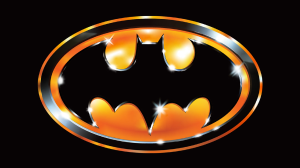For nearly four decades, the Scary Stories to Tell in the Dark series of books from writer Alvin Schwartz and artist Stephen Gammell has been inspiring nightmares in its readers, as the tales never shy away from delivering a frightful experience yet never require extreme violence or gore. Despite the books’ popularity, no one has been able to adapt either the stories or artwork into a live-action experience. That is, until Pan’s Labyrinth director Guillermo del Toro stepped in to develop the project back in 2016. The imagination of the filmmaker, in partnership with director Andre Ovredal‘s disturbing imagery, resulted in the perfect blend of unsettling scares, a youthful sense of adventure, and the confrontation of leaving your childhood behind.
Videos by ComicBook.com
In a small town in 1968, a group of friends celebrates Halloween by going to the supposedly haunted home of one of the town’s founders in search of scares and the spirit of Sarah Bellows, the young daughter of the family who reportedly wrote scary stories. When one of the friends decides to take a book full of Sarah’s stories home with her, she finds that new chapters depicting all manner of frights start to appear, only for those stories to focus on her actual friends, all of who begin to mysteriously disappear.
One of the joys of reading Scary Stories to Tell in the Dark is that, compared to other horror series geared towards children, the books felt truly frightening for young readers. While some of the stories were completely dreadful, others were much more playful, seemingly allowing this book to exist on library shelves alongside much tamer fare. In that regard, children who discovered these books felt like they were discovering haunted tomes, with this film adaptation honoring that concept not just literally with the narrative, but also figuratively, as young children will sure be terrified by the creatures and delighted by the sophomoric humor.
The opening sequence of the film sets the perfect stage for a spooky adventure, drifting through a small town on Halloween as Donovan’s “Season of the Witch” ominously plays over kids going about their teenage business, while also featuring references to Richard Nixon’s presidency and the Vietnam war. Our main characters might be the typical archetypes of teen books, giving us the goofy kid with the pretty sister, the smart girl who feels like an outcast for liking books, or the frightfully timid boy who wants to turn back in the face of fear, but they only help to exemplify universal standards in storytelling to make for an inclusive experience for all audiences.
As the terrors begin to unfold, del Toro and Ovredal prove to be a tremendous match, as a scarecrow who used to be human, a corpse seeking her missing toe, and a large woman with black eyes and pale hair strike the right balance of whimsical and ghastly. Fans of del Toro surely would have expected to love the creatures, but it’s Ovredal’s injection of more straightforward horror and the ways in which he shoots these creatures that takes things up a notch. Additionally, the pacing of the scares will startle even the more seasoned of horror fan, as he delays the very expected startling moments to an agonizing degree, making up for the film’s lack of blood and gore by drawing out the tense moments as long as possible, allowing the tension to build to insurmountable levels.
Adding to the inherent fear of the stories themselves, the setting for the film also, sadly, offers both audiences and the character real-world reminders of just how terrifying life can be. The character Ramón (Michael Garza) is the target of racism not only from local bullies, but also from the police. As Nixon regularly appears on TV, character point out his corruption, while the horrors of war are felt throughout the community. These references will feel eerily prescient in our current political climate, as our main characters, and the audience, realize that these fears are merely part of a cycle we must accept as inevitabilities. The important lesson that the film mostly teaches is to stand up for what’s right and, when faced with any number of horrors, you realize that you can’t necessarily stop them from happening, but you can find more positive ways to cope with those disturbing notions.
The film’s biggest stumbling block is its overall narrative momentum, as it loses steam by the time it heads to its climax. Possibly because the filmmakers would only get one shot at this, they stuffed in too many stories merely for the sake of telling them than for an organic inspiration, leaving the audience exhausted by the end. The film’s interpretation of “The Red Spot,” for example, could have been cut entirely, but it’s such an evocative sequence that fans likely would have been disappointed to not witness it. Unfortunately, the scene also fails to match the effectiveness of the story in the book, despite the rest of the film finding much more success with its interpretations of iconic stories and illustrations.
What makes Scary Stories to Tell in the Dark such a success is that, as films like Goosebumps or The House with a Clock in Its Walls offer young viewers PG-rated scares, this film also appeals to those younger audiences while also feeling like its pushing the envelope as far as it can go before reaching an R rating. A horror-loving child will likely embrace the terror and enjoy the ride, while the scares are effective enough to scar other audiences for life who aren’t as interested in the genre. Add to that that Halloween setting, and Scary Stories to Tell in the Dark is sure to inspire an entire generation to love things that go bump in the night and never be afraid to confront the things that scare us, while devout horror fans will likely return for annual October viewings when we need a palette cleanser to break up the more gruesome marathons we embark on. This means the adaptation accomplishes the seemingly impossible by honoring not only the narratives, but the entire spirit of the original books that made them staples of horror fans’ childhoods.
Rating: 4 out of 5
Scary Stories to Tell in the Dark lands in theaters Friday, August 9th.








